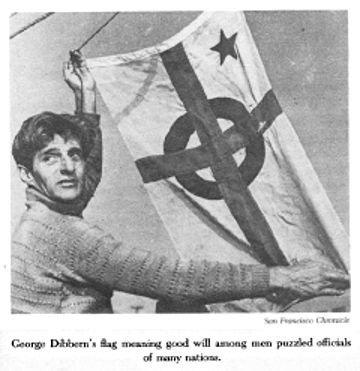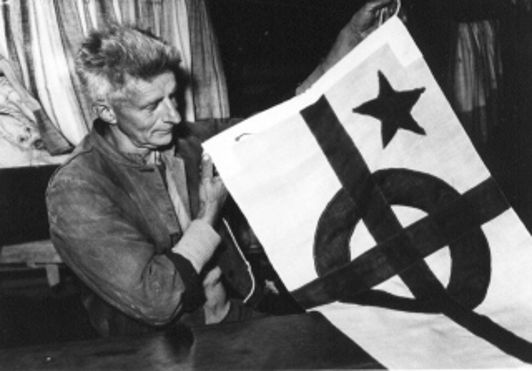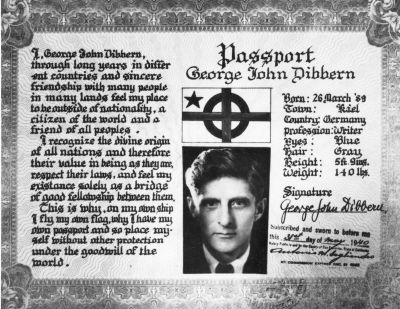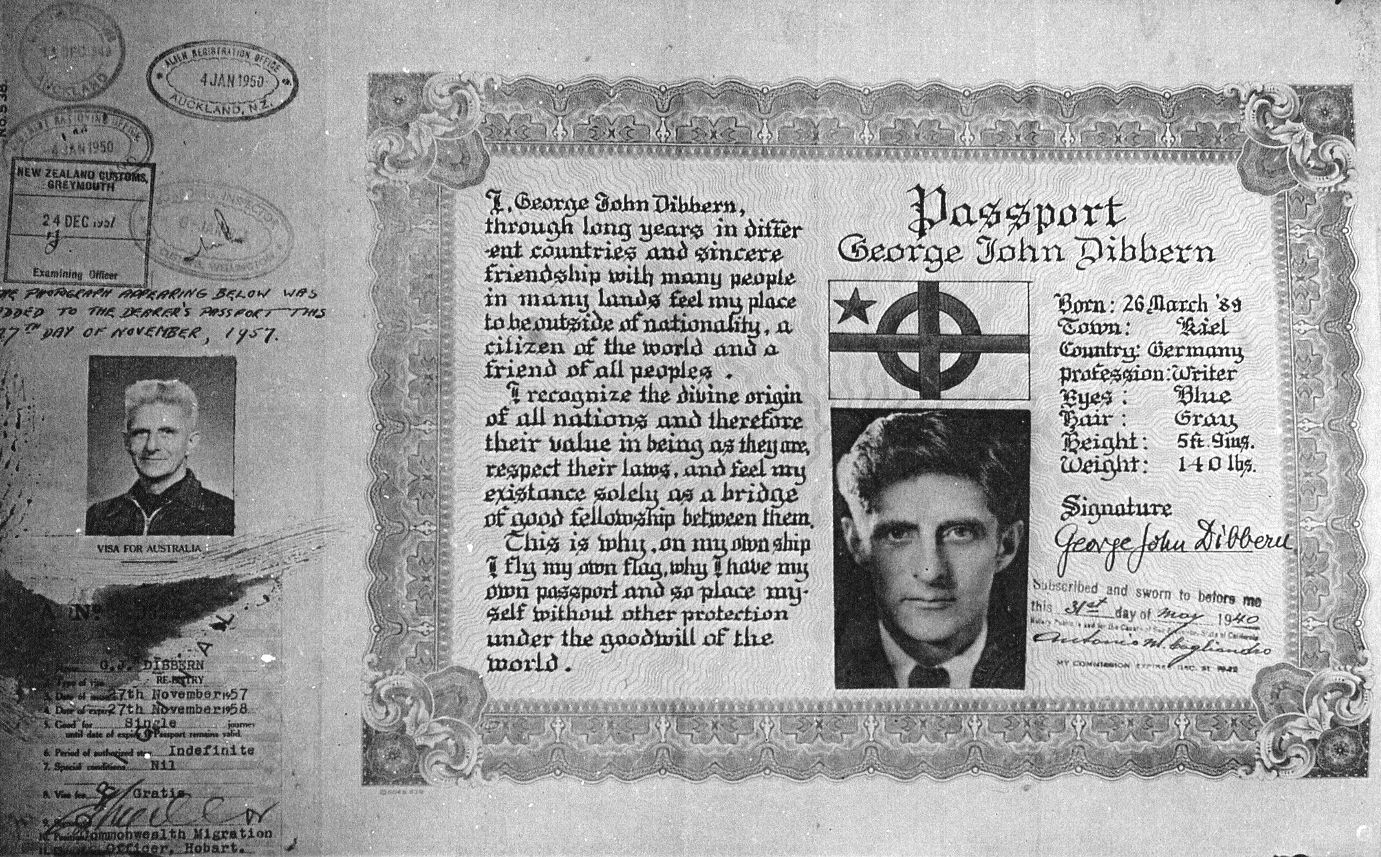George Dibbern felt a flag ought to represent one’s principles. Since the swastika, declared to be obligatory by the Nazi Party in September 1935,clashed with his beliefs, he refused to raise it and as a result created a flag of his own design. Friend Beatrice Krauss in Hawaii surprised him one day when she presented him with a flag she had made for Te Rapunga.
Dibbern’s explanation of the symbolism of his flag was as follows:
It has a white ground with a red cross of St. George cutting a dark blue circle; and in the upper left hand corner is a blue star. The white stands for equal rights, not equality, but equal rights for men to evolve, each according to his individuality. On this right the human world stands or falls.
The dark blue circle stands for the brotherhood of man, for though we fight like brothers we must grow a loyalty to our one family if we are to survive. On top of the circle of brotherhood lies the red cross of freedom and of pain. It is through freedom to experience, and the pain experience brings, that we learn.
The blue circle also represents a planet, like the earth, which receives its light from the sun as we have received our light from God. But I believe that God is within each of us, and that our aim should be to be conscious of him, to become a self-shining light, a star.
So the star in the corner represents my aim. It is a blue star because I try to become a brother of a new brotherhood.


Once he became known as a “Man without a Country” (1939) it became evident to Dibbern that if he were to remain true to his mission of breaking down barriers and of being a bridge of friendship, he could no longer travel with a German passport. (In view of the Nazi move to divest him of his German citizenship it likely would not have been renewed in any case.) In 1940, after careful consideration of the wording, he created his own passport and had it notarized in San Francisco, May 31,1940. Included was a depiction of the flag he had conceived and with which Te Rapunga had arrived in Victoria, Canada, in July 1937.

Text of the passport:
I, George Dibbern, through long years in different countries and sincere friendship with many people in many lands feel my place to be outside of nationality, a citizen of the world and a friend of all peoples.
I recognize the divine origin of all nations and therefore their value in being as they are, respect their laws, and feel my existence solely as a bridge of good fellowship between them.
This is why, on my own ship I fly my own flag, why I have my own passport and so place myself without other protection under the goodwill of the world.
Several versions of the passport were created in various languages—and with a variety of photographs. After he was released from Internment in New Zealand, Dibbern sailed with his own passport which was tolerated—and stamped—by South Sea authorities.
